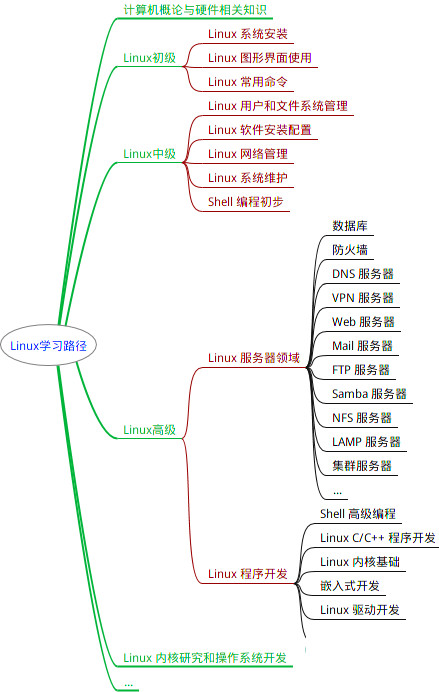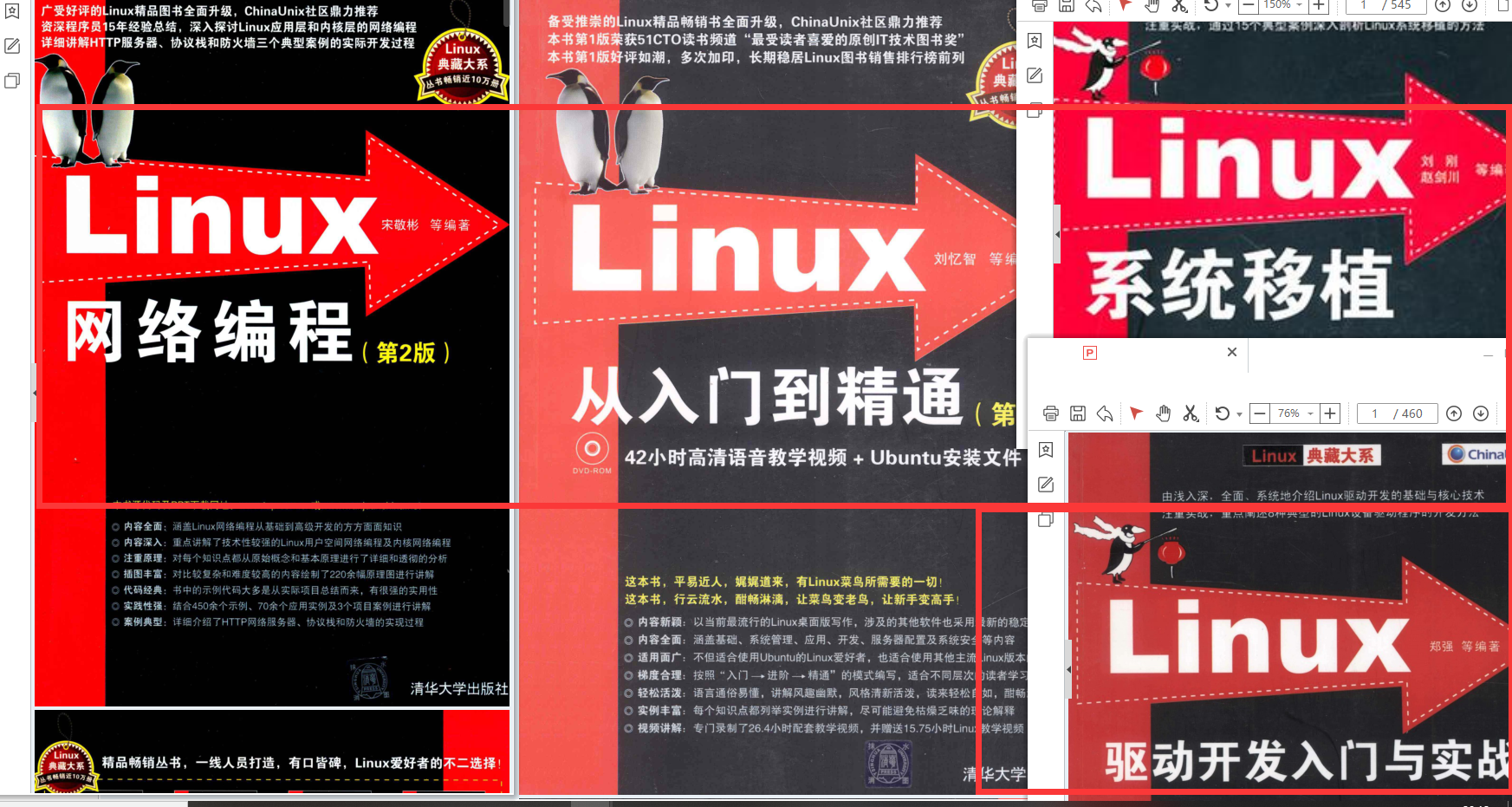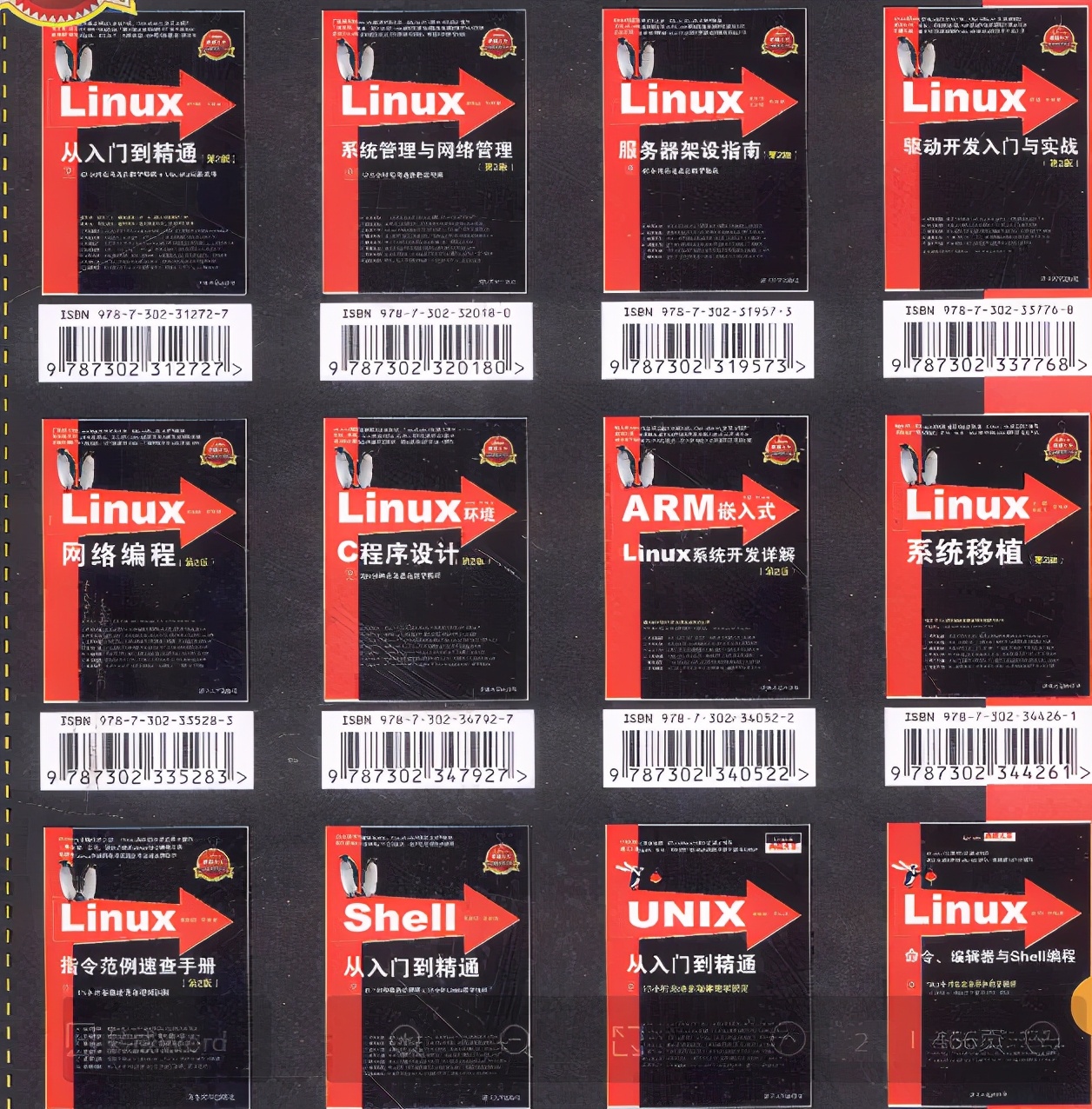
最全的Linux教程,Linux从入门到精通
======================
-
linux从入门到精通(第2版)
-
Linux系统移植
-
Linux驱动开发入门与实战
-
LINUX 系统移植 第2版
-
Linux开源网络全栈详解 从DPDK到OpenFlow

第一份《Linux从入门到精通》466页
====================
内容简介
====
本书是获得了很多读者好评的Linux经典畅销书**《Linux从入门到精通》的第2版**。本书第1版出版后曾经多次印刷,并被51CTO读书频道评为“最受读者喜爱的原创IT技术图书奖”。本书第﹖版以最新的Ubuntu 12.04为版本,循序渐进地向读者介绍了Linux 的基础应用、系统管理、网络应用、娱乐和办公、程序开发、服务器配置、系统安全等。本书附带1张光盘,内容为本书配套多媒体教学视频。另外,本书还为读者提供了大量的Linux学习资料和Ubuntu安装镜像文件,供读者免费下载。

本书适合广大Linux初中级用户、开源软件爱好者和大专院校的学生阅读,同时也非常适合准备从事Linux平台开发的各类人员。
需要《Linux入门到精通》、《linux系统移植》、《Linux驱动开发入门实战》、《Linux开源网络全栈》电子书籍及教程的工程师朋友们劳烦您转发+评论
网上学习资料一大堆,但如果学到的知识不成体系,遇到问题时只是浅尝辄止,不再深入研究,那么很难做到真正的技术提升。
一个人可以走的很快,但一群人才能走的更远!不论你是正从事IT行业的老鸟或是对IT行业感兴趣的新人,都欢迎加入我们的的圈子(技术交流、学习资源、职场吐槽、大厂内推、面试辅导),让我们一起学习成长!
RDB files created with checksum disabled have a checksum of zero that will
tell the loading code to skip the check.
rdbchecksum yes
The filename where to dump the DB
dbfilename dump.rdb
The working directory.
The DB will be written inside this directory, with the filename specified
above using the ‘dbfilename’ configuration directive.
The Append Only File will also be created inside this directory.
Note that you must specify a directory here, not a file name.
dir ./
################################# REPLICATION #################################
Master-Slave replication. Use slaveof to make a Redis instance a copy of
another Redis server. A few things to understand ASAP about Redis replication.
1) Redis replication is asynchronous, but you can configure a master to
stop accepting writes if it appears to be not connected with at least
a given number of slaves.
2) Redis slaves are able to perform a partial resynchronization with the
master if the replication link is lost for a relatively small amount of
time. You may want to configure the replication backlog size (see the next
sections of this file) with a sensible value depending on your needs.
3) Replication is automatic and does not need user intervention. After a
network partition slaves automatically try to reconnect to masters
and resynchronize with them.
slaveof
If the master is password protected (using the “requirepass” configuration
directive below) it is possible to tell the slave to authenticate before
starting the replication synchronization process, otherwise the master will
refuse the slave request.
masterauth
When a slave loses its connection with the master, or when the replication
is still in progress, the slave can act in two different ways:
1) if slave-serve-stale-data is set to ‘yes’ (the default) the slave will
still reply to client requests, possibly with out of date data, or the
data set may just be empty if this is the first synchronization.
2) if slave-serve-stale-data is set to ‘no’ the slave will reply with
an error “SYNC with master in progress” to all the kind of commands
but to INFO and SLAVEOF.
slave-serve-stale-data yes
You can configure a slave instance to accept writes or not. Writing against
a slave instance may be useful to store some ephemeral data (because data
written on a slave will be easily deleted after resync with the master) but
may also cause problems if clients are writing to it because of a
misconfiguration.
Since Redis 2.6 by default slaves are read-only.
Note: read only slaves are not designed to be exposed to untrusted clients
on the internet. It’s just a protection layer against misuse of the instance.
Still a read only slave exports by default all the administrative commands
such as CONFIG, DEBUG, and so forth. To a limited extent you can improve
security of read only slaves using ‘rename-command’ to shadow all the
administrative / dangerous commands.
slave-read-only yes
Replication SYNC strategy: disk or socket.
-------------------------------------------------------
WARNING: DISKLESS REPLICATION IS EXPERIMENTAL CURRENTLY
-------------------------------------------------------
New slaves and reconnecting slaves that are not able to continue the replication
process just receiving differences, need to do what is called a "full
synchronization". An RDB file is transmitted from the master to the slaves.
The transmission can happen in two different ways:
1) Disk-backed: The Redis master creates a new process that writes the RDB
file on disk. Later the file is transferred by the parent
process to the slaves incrementally.
2) Diskless: The Redis master creates a new process that directly writes the
RDB file to slave sockets, without touching the disk at all.
With disk-backed replication, while the RDB file is generated, more slaves
can be queued and served with the RDB file as soon as the current child producing
the RDB file finishes its work. With diskless replication instead once
the transfer starts, new slaves arriving will be queued and a new transfer
will start when the current one terminates.
When diskless replication is used, the master waits a configurable amount of
time (in seconds) before starting the transfer in the hope that multiple slaves
will arrive and the transfer can be parallelized.
With slow disks and fast (large bandwidth) networks, diskless replication
works better.
repl-diskless-sync no
When diskless replication is enabled, it is possible to configure the delay
the server waits in order to spawn the child that transfers the RDB via socket
to the slaves.
This is important since once the transfer starts, it is not possible to serve
new slaves arriving, that will be queued for the next RDB transfer, so the server
waits a delay in order to let more slaves arrive.
The delay is specified in seconds, and by default is 5 seconds. To disable
it entirely just set it to 0 seconds and the transfer will start ASAP.
repl-diskless-sync-delay 5








 最低0.47元/天 解锁文章
最低0.47元/天 解锁文章















 1191
1191

 被折叠的 条评论
为什么被折叠?
被折叠的 条评论
为什么被折叠?








